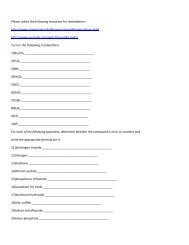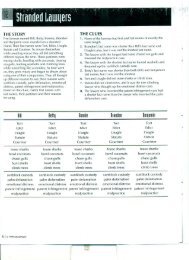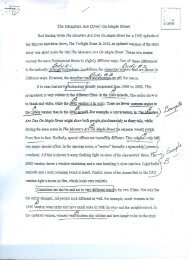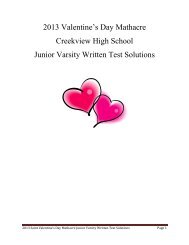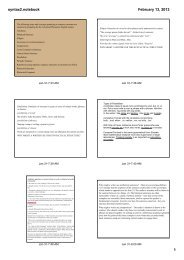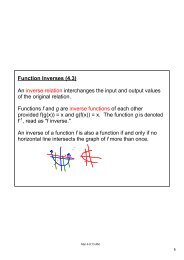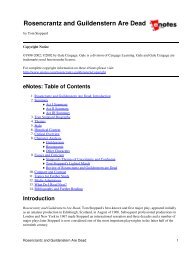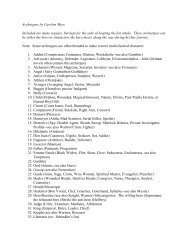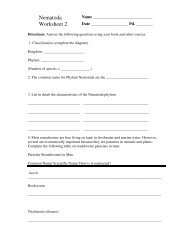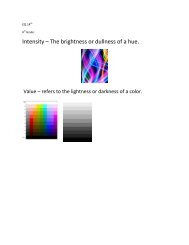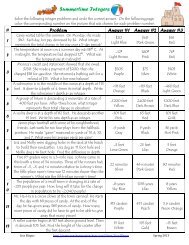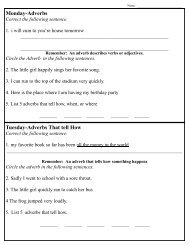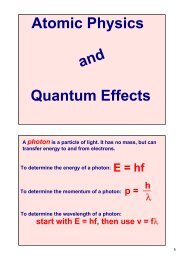Create successful ePaper yourself
Turn your PDF publications into a flip-book with our unique Google optimized e-Paper software.
Copyright © Glencoe/McGraw-Hill, a division of the McGraw-Hill Companies, Inc.<br />
Name Date Class<br />
3<br />
<strong>Study</strong> Guide<br />
Mixed Groups<br />
Chapter<br />
19<br />
Directions: The elements that make up groups 13 through 16 of the periodic table are listed below. Classify<br />
each element as a metal, metalloid, or nonmetal by writing its name under the correct heading in the table. Refer<br />
to the periodic table of the elements in your textbook for information on each element.<br />
Boron Group<br />
boron<br />
aluminum<br />
gallium<br />
indium<br />
thallium<br />
Nitrogen Group<br />
nitrogen<br />
phosphorus<br />
arsenic<br />
antimony<br />
bismuth<br />
Carbon Group<br />
carbon<br />
silicon<br />
germanium<br />
tin<br />
lead<br />
Oxygen Group<br />
oxygen<br />
sulfur<br />
selenium<br />
tellurium<br />
polonium<br />
1. Metals 2. Metalloids 3. Nonmetals<br />
Directions: Answer the following questions in the spaces provided.<br />
4. Why is it useful to create neptunium by bombarding uranium with protons, even though<br />
neptunium disintegrates in about two days?<br />
5. What are allotropes?<br />
6. Describe the appearance of two allotropes of silicon.<br />
7. Name three allotropes of carbon.<br />
Mixed Groups 71




